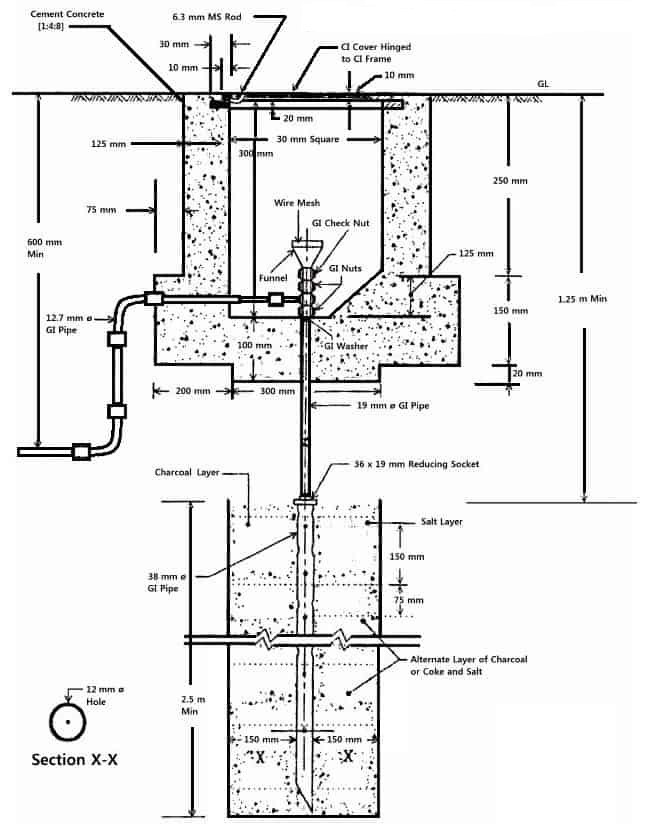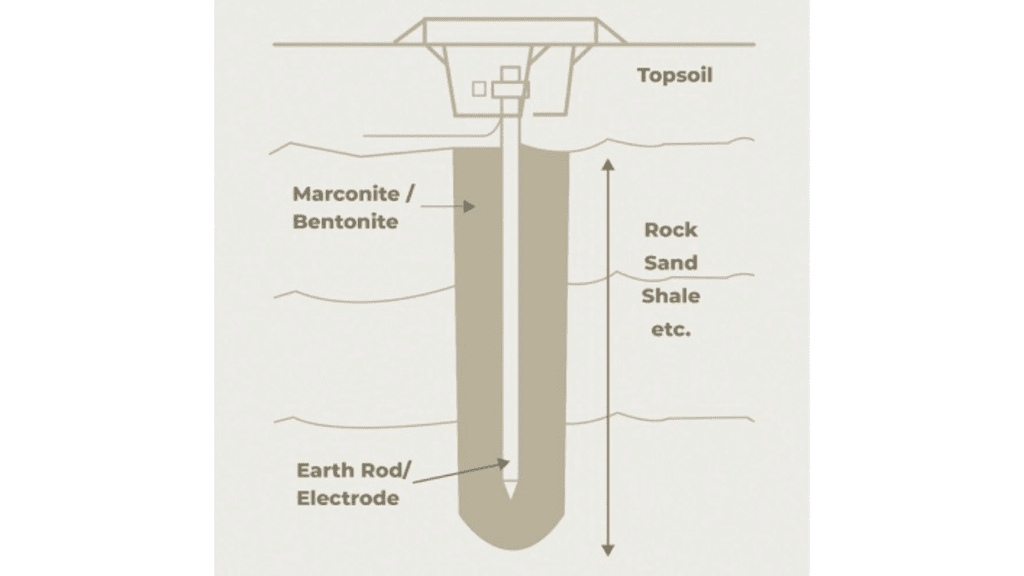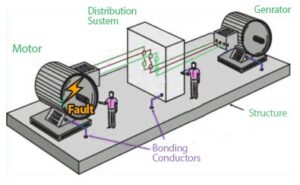Electrical circuits are involved with an adequate amount of energy to cause electric shock hazards in case of a fault. A fault can occur due to power surges, leakages due to faulty equipment, lightning strikes hitting directly or indirectly and so on. So it is necessary to focus on the safety of all electrical systems be it domestic or commercial.
Need for Earthing
Earth is considered as a charge sink therefore any fault current developed in an electrical system can be dissipated to the earth by earthing the system.
How we connect to the earth is an important question we now have.
A highly resistive path can be a difficult one for the developed charges to flow, in a short period. Thus we make sure to provide a path with the lowest resistance so that maximum energy is trailed down in a short period, and this is called Earthing.
Based on the Earthing Electrodes we have different types of earthing:
1) Pipe Earthing
2) Plate Earthing
3) Strip or Wire Earthing
4) Rod Earthing
5) Coil Earthing
6) Chemical Earthing
Let us have a detailed study on Pipe Earthing and Chemical Earthing here and the significance of each.
Pipe Earthing
Pipe Earthing is one of the most common earthing techniques. The pipe earthing uses a galvanized iron (GI) pipe, and the dimension of the GI pipe used for a structure depend mainly on the magnitude of possible current and the soil type.
The dimension of the pipe is usually 40mm (1.5in) diameter and 2.5m (9ft) length for ordinary soil and greater for dry and rocky soil as the soil resistivity is higher in such cases.

GI Pipe Specifications
The GI pipe is perforated along its length and has a tapering end. It has a terminal clamp on the top end from which the earth wire connections are made.
The GI pipe is placed vertically deep into the soil and requires regular watering to maintain the resistivity of the soil.
Steps for Pipe Earthing
- Identify the ideal location for earthing, an earth electrode should not be closer than 1.5 m from any building.
- Excavate an earth pit with the required depth considering the soil type and resistivity.
- The tapered end of the GI pipe should go vertically deep into the soil, not less than 3m.
- The pit is to be filled with charcoal and salt alternatively to increase the moisture-holding capacity of the soil and thus maintain its conductivity.
- The top end of the pipe should not be less than 20 cm below the ground level, and a chamber of size not less than 30 cm x 30 cm x 30 cm is built over it for maintenance.
- A watering funnel with mesh is to be installed at the top opening end. This is for maintaining the moisture content by watering during summer or dry seasons.
- Earthing wires are connected to the pipe at the terminal clamps available, using nuts-bolts and washers.
- Usually, an 8SWG earth wiring is used for high tension connections and, a 10SWG wire is used for low tension connections.
For safe earthing keep a note of the following aspects:
The location of the earth electrode shall be such that the soil remains moist throughout the year.
Moisture increases conductivity and thus enables the quick flow of fault current to the earth.
If more than one electrode pipe is to be used, a separation of 2m should be maintained between two adjacent electrodes.
Applications of Pipe Earthing
Pipe earthing is the most economical and efficient method, therefore is commonly used for domestic earthing and transmission tower earthing.
In ordinary earthing, salt and coal are used alternatively to surround the electrode. Chemical earthing is in which we use highly conductive chemical compounds instead of salt and coal.
The salt used in usual earthing methods can get dissolved in water and result in corrosion of the GI pipe over time, also they lose their conductivity over time. The chemical compounds used in chemical earthing avoid this and give longer life.
Also, the chemical compound reduces the resistivity of the soil considerably. In certain soil conditions, regular watering is necessary for soil resistivity maintainance (For Chemical earthing it is not required).
Chemical Earthing Specifications
- Two types of powders that are used in chemical earthing are Bentonite Powder and Marconite Powder, which maintains the resistivity of the soil.
- Earthing with Bentonite Powder is used in a normal place while earthing with Marconite Powder is used in a dry place, when soil resistivity is very high.
- Marconite has far low resistance and is the best ground enhancement material compared to others.
- But due to its higher cost, its usage is limited when compared to Bentonite.
Steps in Chemical Earthing
- Excavate a pit of 500 x 500 x 200mm, and then make a hole at its centre with 100mm diameter and 3.5m depth.
- The marconite powder usually comes in a package of 25 kilos and is mixed with water and then filled into it.
- Fill the hole with the chemical compound, then fill it with water and wait for about 6-10 hours for the water to get absorbed.
- Place the electrode in the hole in an upright position with the terminal end on top, and make sure it is ready for earth connections.
- Now fill the hole with the compound and water, and wait until it sets.
- The chemical compound forms a low resistance region around the earth electrode and provides a quick path for excess current.
- Complete the earthing connections and also check the soil resistivity.
Application of Chemical Earthing
Chemical earthing is for mountains and dry areas where the soil moisture is low naturally and needs to be maintained for safe earthing.
As the chemical compound remains intact throughout all climates, it gives longer life to the earthing and thus reduces the frequent maintenance and watering of earth pits.
Summary
Chemical compounds used as a backfill in the earth pits helps reduce the soil resistivity considerably and for a longer time. They also reduce corrosion (caused by salt used in normal earthing). So chemical earthing is an enhanced earthing method.








